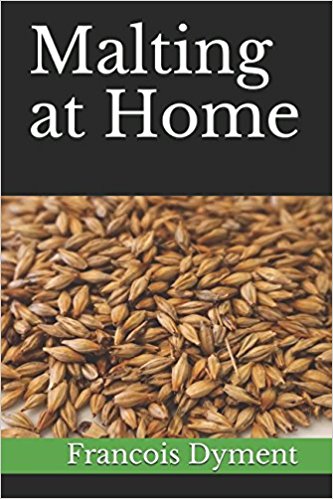I’ve been focussing a lot lately on historical malting because I find it so interesting how malting has changed so drastically over the past 150 years. This has caused me to wonder what a malting schedule looks like today, what are the times and temperatures used in an industrial scale malting plant. I came across a great article investigating the optimal malting times and temperatures using modern barley varieties. An accelerated malting procedure – influences on malt quality and cost savings by reduced energy consumption and malting losses by Christian Muller and Frank-Jurgen Methner can be read for free. In this study they use 5 different barley cultivars to compare 5 different malting and kilning programs which include for reference, a standard laboratory program according to MEBAK [Mitteleuropäische Brautechnische Analysenkommission (Central European Commission for Brewing Analysis)] a program applied to an industrial malting plant and three accelerated schedules based on previous studies.
Here is the optimal accelerated program:
Steeping
- 1st steep 5.5 hours at 22°C
- Dry rest 18 Hours at 21°C (which would also include CO2 extraction by fan)
- 2nd steep 1 1/4 hours at 20°C
Note: water is absorbed much faster at warmer temperatures, it was also found that malt homogeneity was greater with warmer steep temperatures.
Germination:
- 8 hours at 20°C
- 24 hours at 21°C
- 42 hours at 20°C
Kilning:
- 6.5 h 37.5°C
- 4.5 h 40°C
- 2.5 h 45°C
- 2 h 50°C
- 2 h 55°C
- 1.5 h 60°C
- 4 h 80°C
- 1 h 82°C
Total time 123 hours! That’s just over 5 days start to finish.
Advantages: Aside from the obvious amount of time saved there were other advantages when compared with the standard laboratory and industrial programs.These were: reduced proteolytic modification, higher oxidative flavour stability, higher malt homogeneity (more consistent germination), improved cytolytic modification (degradation of beta-glucans) and the lautering performance was not negatively influenced. Neither was the DON content, surprisingly. Another advantage was less DMS-P which could mean less kilning and boiling time is needed to reduce the DMS-P content in the malt or wort.
Disadvantages were a slightly decreased extract value owing to a higher pH value and a slightly lower activity of the a and B- amylase enzymes.
I think I’ll try this, perhaps I’ll make it a Modern malt vs. Historical malt comparison, 5 days vs. 3 weeks! I was going to do that anyway but this will be the recipe I’m going to use for the modern malt. For the historical, I’ll probably combine the William Ellis 1736 method with what’s in the Scotch Bigg report (1806) and a 3-4 day kilning based on Levy’s Practique du Maltage “Malt Anglais”.

